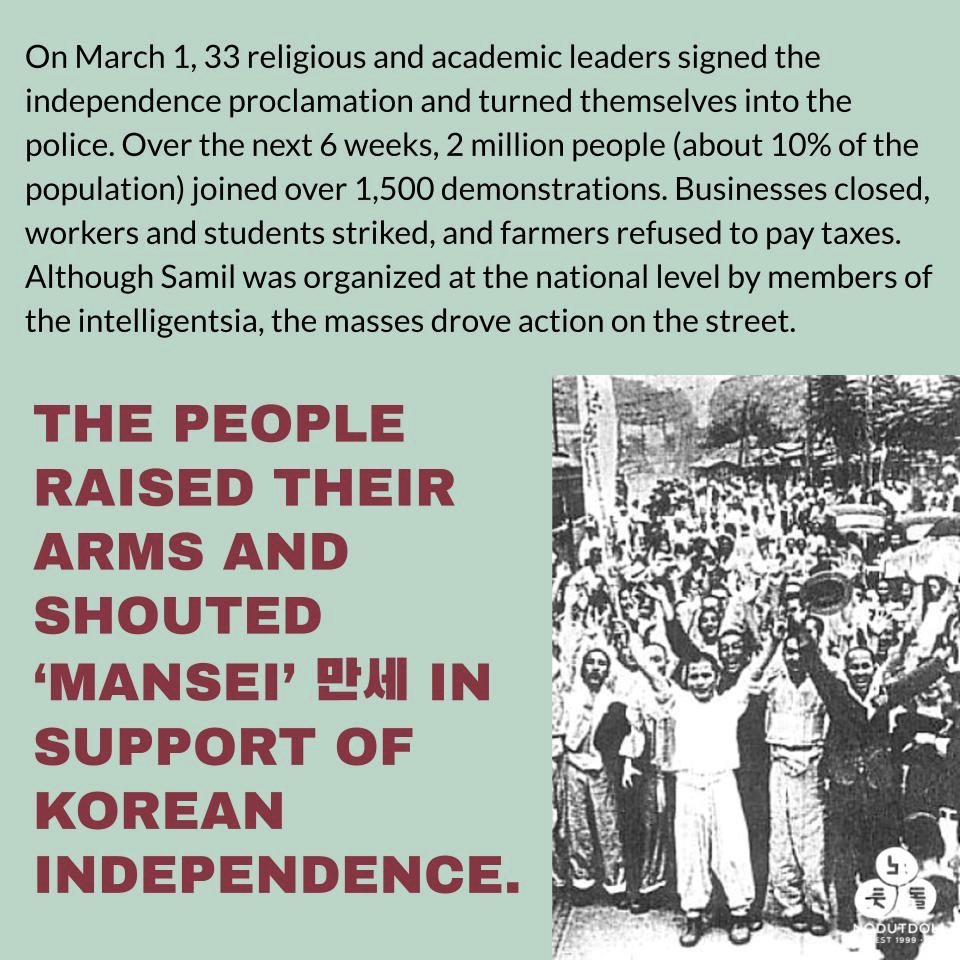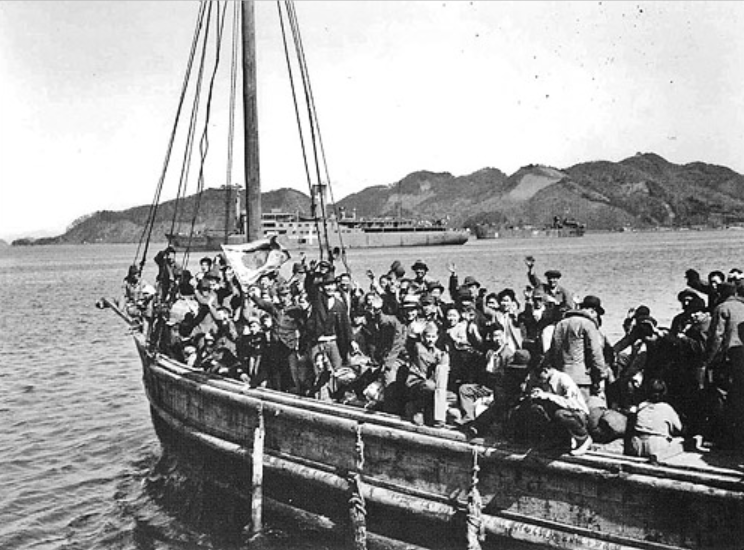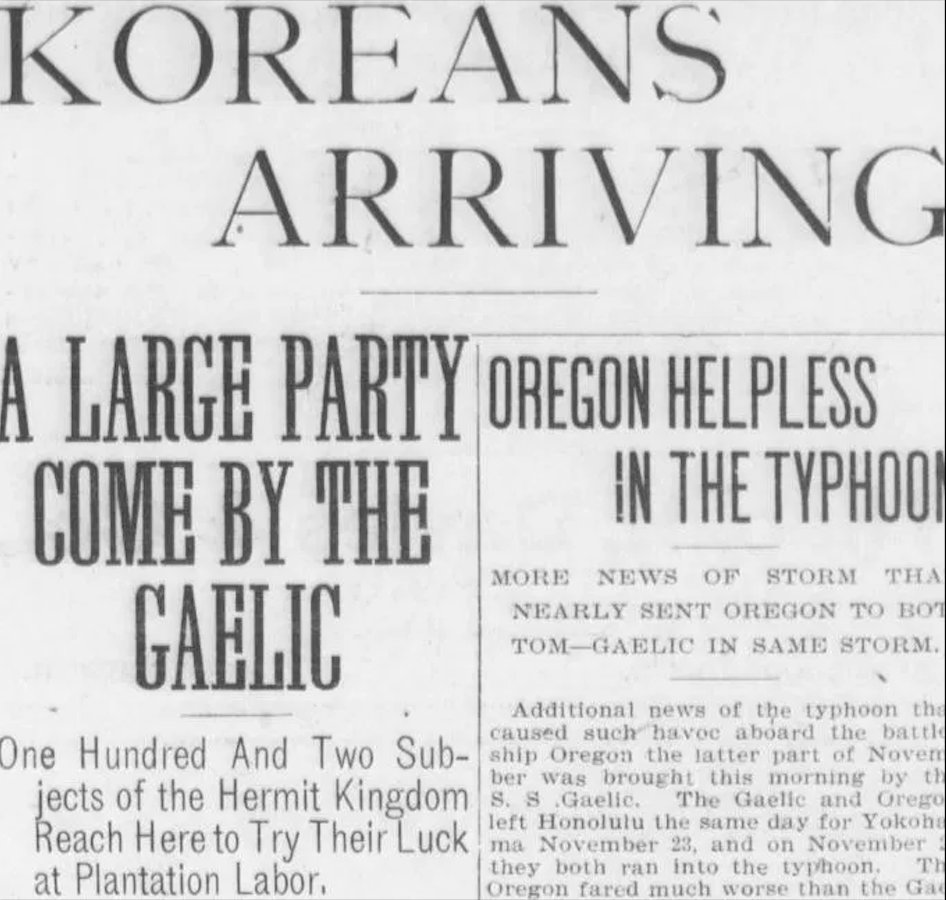
Thread🧵on Samiljeol (삼일절)
On March 1st, 1919, 2 million people across Korea joined over 1,500 demonstrations for independence from Japan. This event became known as the Samil (Three-One) Movement. It is often considered to be the start of the Korean independence movement.
On March 1st, 1919, 2 million people across Korea joined over 1,500 demonstrations for independence from Japan. This event became known as the Samil (Three-One) Movement. It is often considered to be the start of the Korean independence movement.

Japanese colonialism threw Korean society into upheaval. The masses were stripped from their traditional lands and resources were seized for Japanese companies. Widespread hunger and poverty fueled national support for independence. 

The Samil Movement expressed the will of millions of Koreans to be liberated from colonialism, but mass participation does not mean it was an unplanned or spontaneous event. Rather, Samil was a carefully planned event that built on international resistance to colonialism. 

In contrast to the independence declaration read by students in Tokyo, the Samil independence proclamation emphasized nonviolence. On March 1, 33 religious leaders—all men of yangban (nobility) and jungin (middle) backgrounds—signed the proclamation and surrendered to the police.
The national leadership of the Samil movement had a specific class character, but the movement was made by the masses.
2 million people, about 10% of the population, attended over 1500 demonstrations. Businesses closed, workers & students striked, & farmers refused to pay taxes.
2 million people, about 10% of the population, attended over 1500 demonstrations. Businesses closed, workers & students striked, & farmers refused to pay taxes.

Although the leaders of Samil in the public eye were all men, women played a vital role in organizing and leading demonstrations. High school girls and gisaengs, or courtesans, were some of the most important segments driving the movement. 

Ultimately, the Samil Movement did not liberate Korea from Japanese colonization. The strategy of appealing to the US for support was a failure. The terrible repression that followed killed at least 7500 people, and temporary reforms to Japanese rule did not last. 





Nevertheless, Samil galvanized the struggle for Korean independence, and had far-reaching effects beyond Korea.
Thousands fled to Manchuria to fight Japan through guerrilla warfare. The May 4th Movement in China and Non-cooperation Movement in India were both influenced by Samil
Thousands fled to Manchuria to fight Japan through guerrilla warfare. The May 4th Movement in China and Non-cooperation Movement in India were both influenced by Samil

Samil failed because its strategy & leadership were flawed. Yet it was also an important milestone that paved the way for revolutionary leadership to emerge from the peasantry & workers during guerrilla warfare. To honor Samil's martyrs, we must remember the movement's lessons. 

102 years since Samil, the dream of an independent, united Korea has yet to be realized. Today the US suffocates North Korea under sanctions and the constant threat of war, and upholds a neocolonial arrangement in the south through military occupation.
The terms of colonization have changed, but the struggle for liberation continues. The lessons of more than a century of struggle should guide us as we confront imperialism in its final stages.
• • •
Missing some Tweet in this thread? You can try to
force a refresh

















